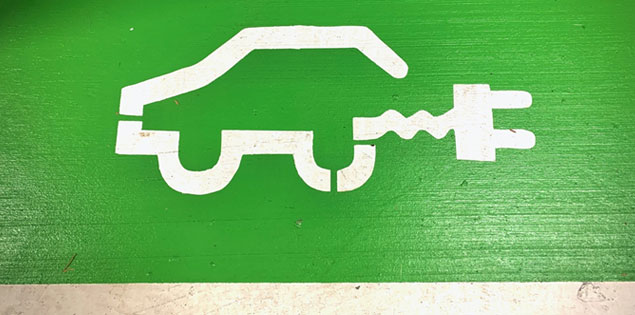EVs are an emerging market trend in developing economies and the industry is expected to grow from4 million units in 2021 to 35 million units by 2030, leading to a reduction in manufacturing cost, tax rebates, and eventually becoming a target of every country to help achieve net-zero emissions. Yet the current setbacks EVs face are due to insufficient infrastructure, such as charging station availability in most developing economies, which in turn poses a significant obstacle for emerging markets in achieving their net-zero ambitions.
Though EVs have seen immense growth in recent years, they face barriers:
- Charging stations: Due to absence of sufficient charging stations, concerns about the capability of the vehicle become even more profound in emerging economies, and especially in rural areas with lower penetration of electricity
- High price: A lack of price parity between an electric vehicle and of conventional fuel-powered vehicle also hinders uptake. For example, in India, a Tata Nexon conventional fuel-powered car costs customers roughly US $9,800, whereas in comparison, an EV of the same brand and category costs US $19,000. This significant divergence in the price complicates greater penetration of EVs in the country’s vehicle fleet.
- Scarce and expensive battery technology: The lithium-ion battery is most widely used for EVs along with other rare earth metals, yet its mining and reserves are mostly found in the Andean region and China. Therfore emerging economy need to import those battery leading to additional costs in the manufacturing process. Also, mining of lithium may lead to the depletion of groundwater reserves in several of those countries impacting their environment and livelihoods
- Policy implications: While some emerging markets are promoting EVs through discounts and incentives, such as FAME II in India, the New Electric Vehicle policy in China or Chile’s National Electromobility Strategy, a lack of enabling policies act as a setback in achieving set EV targets. Policies favoring low-speed two-wheeler and, lead-acid powered EVs haven’t received much favor, thus failing to incentivise customers
Recommendation for Electric Vehicle
Focus on 2 and 3-wheeler markets: Most of the emerging economies face challenges in launching (e-4W) commercial EVs because of the higher engine capacity, due to which more batteries are packed and added. Hence in the emerging market a large amount of the population still depends on 2 and 3 wheeler for commuting. Regulators and financial institutions need to provide incentives to car manufacturers to introduce 2 and 3 wheeler EVs, that are price conscious.
Investing in battery technology and material: All commercial EVs require a lithium-ion battery and most emerging economies need to import lithium. The extraction process is expensive, and one that is complicated as it is found with other rare earth metals that pollute water bodies, and cause soil contamination. Emerging economies need to develop a better recycling facility for lithium batteries that can help reduce import and subsequently production externalities. Alternatively, using an alternative metal like aluminum which has higher efficiency and better energy density would alleviate this, making EVs more sustainable.
Electric dream for electric cities: City planners need to strengthen charging station infrastructure, for example, building CCS and CHAdeMo connectors where the charging time could be reduced to 60-80 minutes and provide multiple charging facilities through a single connector. Also, making charging stations work as swapping stations, building multiple charging points across the city and connecting the charging facility with a renewable energy-based power grid through a centralized and distributed system.
Avenue for future profit : As EVs are projected to grow at 21.7 % from 2020-2027, investing in EVs could open opportunities for profit . Therefore, banks and NBFC need to come together to finance those projects and share the risk with the company especially those with Orignal Equipment Manufacturer (OEM) through insurance schemes like partial credit guarantee schemes. Also, developing a secondary market to resale vehicles in case of default. All these schemes will lower the cost of capital in financing EVs.
Conclusion
The EV industry will serve as the most potent opportunity for the auto industry where, by 2030 numerous countries’ plans to replace 33% of their conventional vehicle with EVs may be actualised. Yet there have been a number of challenges in terms of charging station availability, with user-friendly infrastructure. There is a dire need to create efficient planning of power grid capacity using renewable energy sources like (solar and wind energy), along with improved battery life of EVs. Building a sustainable supply chain in terms of sourcing batteries and their disposal is also crucial. Although several emerging economies have created favorable policies to promote EVs, more needs to be done in terms of infrastructure development and lithium-ion batteries to increase the market share of EVs and achieve net-zero transmission by 2050.
Bibliography
- https://www.marketsandmarkets.com/Market-Reports/electric-vehicle-market-209371461.html#:~:text=%5B288%20Pages%20Report%5D%20The%20global,at%20a%20CAGR%20of%2026.8%25.&text=This%20has%20led%20to%20a,electric%20vehicles%20in%20the%20market.
- https://auto.hindustantimes.com/
- https://www.orfonline.org/expert-speak/four-policy-issues-to-consider-for-electric-vehicles-in-india/
- https://www.interregeurope.eu/evenergy/news/news-article/3199/7-conclusions-on-how-to-boost-electric-mobility/
- https://olaelectric.com/
- https://auto.economictimes.indiatimes.com/news/auto-components/1600-tonnes-of-lithium-reserves-found-in-karnataka-may-not-be-commercially-viable-dae/80779856#:~:text=Representational%20Image%20Mumbai%3A%20The%20department,in%20Karnataka’s%20Mandya%20district.
- https://medium.com/batterybits/electric-vehicle-policy-framework-in-india-6bdc3ed64ed7
- https://unctad.org/news/developing-countries-pay-environmental-cost-electric-car-batteries
- https://www.sustainalytics.com/esg-research/resource/investors-esg-blog/what-esg-issues-will-investors-face-as-the-electric-vehicle-market-gears-up
- https://www.marketsandmarkets.com/Market-Reports/electric-vehicle-market-209371461.html
- https://www.businesstoday.in/latest/economy-politics/story/delhi-aims-to-set-up-ev-charging-station-in-every-3km-distance-transport-minister-286802-2021-02-05
- https://www.iea.org/reports/global-ev-outlook-2021/policies-to-promote-electric-vehicle-deployment
- https://inc42.com/buzz/is-fame-ii-scheme-doing-more-harm-than-good-for-e-mobility/
- https://www.globenewswire.com/news-release/2021/05/11/2227050/0/en/Electric-Vehicle-EV-Market-Worth-2-495-4-Billion-by-2027-Growing-at-a-CAGR-of-33-6-From-2020-Exclusive-Report-by-Meticulous-Research.html
- https://rmi.org/how-to-make-finance-cheaper-more-accessible-for-evs-in-india/
- https://www.rff.org/publications/explainers/renewables-101-integrating-renewables/

